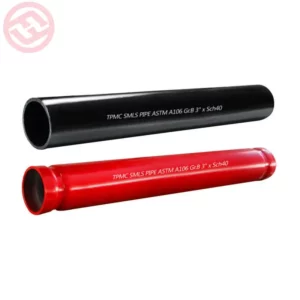Home » Blog
Category Archives: Blog
How does a peristaltic pump work?
The peristaltic pump works by driving the rotor’s pressure roller to squeeze the hose in the pump cavity. Through the compression and depression of the hose, a vacuum is formed, for the purpose of sucking and conveying materials. The transported materials are only ever in contact with the hose (and never with the pump mechanism), which makes them ideal for applications where hygiene is crucial, for example, medical or food processing.
The tubing or hose is the heart of the pump. As a critical component of the pump unit’s performance, the hose is also the pump’s weakest point. It’s under relentless pressure, because it constantly gets squeezed during normal operation, which can cause the hose to weaken and deteriorate.
Main uses for peristaltic pumps
Peristaltic pumps are typically used in laboratory and medical applications, but also in wastewater treatment, the food, paper, and plastic industry, as well as many other industrial applications. Most peristaltic metering pumps require lubricant baths, but roller peristaltic pumps are usually lubricant free. Let’s review the pros and cons of peristaltic pumps in more detail to see why they are among the top four best metering pumps:
Pros of the peristaltic pump
- These offer excellent metering range/turndown
- They are compatible with most chemical applications (limited compatibility with solvents)
– Chemicals only affect hose – which can be replaced
- Off-gassing has no effect
- They are well-suited for slurries/solids… however, in some applications, this may slow down the pump
- Viscosity / shear sensitivity is excellent, with the lowest shear of all applications
- They have excellent dry suction abilities. When paired with rigid tubing, a peristaltic pump can provide high suction lift capabilities.
Cons of the peristaltic metering pump:
- The biggest disadvantage of the peristaltic pump comes from inadequate installation and care of the hose. Buying a durable and rigid hose mitigates this risk.
- Maintenance of the hose is critical; thus maintenance frequency is higher
– 2000 – 4000 hours of tube/hose life per pump
- Speed of the pump’s operation places the motor under tremendous demand, which can reduce pumping ability and increase risk of hose rupture.
– Lower speed allows longer life
– Higher pressure leads to shorter lifespan
- High risk of leakage / chemical containment issues – leaks due to hose failure can damage casing and equipment
- Type of pumped fluid important, as well as temperature
- Medium to high cost
– Medium for low flows (<400 LPH)
– High for flows greater than 500 LPH
The simplest way to avoid the issues presented by peristaltic hose pumps is to use the proper hose and inspect it regularly. One size really does not fit all when looking at hose fit. Incorrectly sized hoses and inferior construction will result in hose failure, which can lead to unplanned downtime, production loss and high maintenance costs.
Kraft Compostable Heat Seal Bags
Product Description
Our Kraft heat seal with product windows are constructed with innovative green technology. Our KHS46W bag is 4 3/8″ x 6 1/4″ and is ideal for showcasing food items such as dried fruit, trail mixes, cookies, ground coffee, and tea. This eco-friendly choice is made of 50 gsm Kraft paper and has a 1.6 mil PLA lining derived from plant-based material making this bag 4.0 mil thick. The clear product window allows customers to see what’s inside. This pouch comes open ended for easy filling and can be heat for a secure closure. The usable space under the round hang hole and the tear notches is 4″ x 5 1/16″. Food safe. Get a customized print directly onto this package. More more information, visit our custom packaging .
Product Details
- Pack Quantity: 100
- Color Description: Kraft
- Inner Dimensions: 4″ x 6″
- Outer Dimensions: 4 3/8″ x 6 1/4″
- Recycle Code: 7 Other
- Sustainability: Commercial Compostable
- Eco Friendly: Yes
- Closure Type: No Flap/Open
- Food Safe: Yes
- Heat Sealable: Yes
- Tear Notch: Yes
- Material: Kraft/PLA
- Thickness: 4.0 mil

How do materials used in coffee bag white affect the overall cost-effectiveness of packaging solutions?
The choice of materials used in white coffee bags can have a significant impact on the overall cost-effectiveness of packaging solutions.
Here’s how different materials may influence costs:
- Base Material Cost: The cost of the base material itself is a primary factor affecting cost-effectiveness. For example:
- Paper: Paper-based materials such as bleached or unbleached kraft paper may be more cost-effective compared to plastic or metalized films.
- Plastic: Certain types of plastic films, such as polyethylene (PE) or polypropylene (PP), may offer cost advantages over other materials due to their lower raw material costs.
- Metalized Films: Metalized films, which have a thin layer of aluminum deposited onto a plastic substrate, tend to be more expensive than non-metalized materials due to the added manufacturing process and material cost.
- Printing and Graphics: The printing process and the complexity of graphics and designs can impact costs. For example:
- Flexographic Printing: Simple designs and limited color options can be more cost-effective with flexographic printing, which is commonly used for high-volume printing.
- Digital Printing: Digital printing offers greater flexibility for short runs and variable data but may have higher upfront costs for setup and equipment.
- Inks and Coatings: Specialty inks, coatings, or finishes used for enhanced graphics or branding may add to the overall cost of the packaging.
- Barrier Properties: Coffee packaging requires certain barrier properties to protect the freshness and flavor of the coffee beans. coffee bag white Materials with enhanced barrier properties, such as aluminum foil or specialty laminates, may offer superior protection but could be more expensive compared to standard materials.
- Sustainability Considerations: Sustainable packaging materials, such as biodegradable films or recyclable paper, may be cost-competitive with traditional materials or slightly higher in cost. However, the long-term cost-effectiveness may improve due to potential benefits such as brand loyalty, regulatory compliance, and reduced environmental impact.
- Manufacturing Processes: Certain manufacturing processes or features, such as resealable zippers, tear notches, or one-way degassing valves, can add to the overall cost of the packaging solution. However, these features may enhance functionality, convenience, and consumer appeal, potentially justifying the investment in terms of overall value.
- Supply Chain Efficiency: Material availability, transportation costs, and supply chain efficiency can impact overall costs. Locally sourced materials or standardized packaging sizes may offer cost advantages by reducing transportation and inventory costs.
- Regulatory Compliance: Compliance with regulatory requirements, such as food safety standards or labeling regulations, may necessitate specific materials or additional testing and certification, which can affect overall costs.
In summary, the cost-effectiveness of coffee bag materials depends on various factors such as base material cost, printing and graphics, barrier properties, sustainability considerations, manufacturing processes, supply chain efficiency, and regulatory compliance. By carefully evaluating these factors and balancing cost considerations with performance requirements and brand objectives, coffee manufacturers can select materials that offer the best value proposition for their packaging solutions.
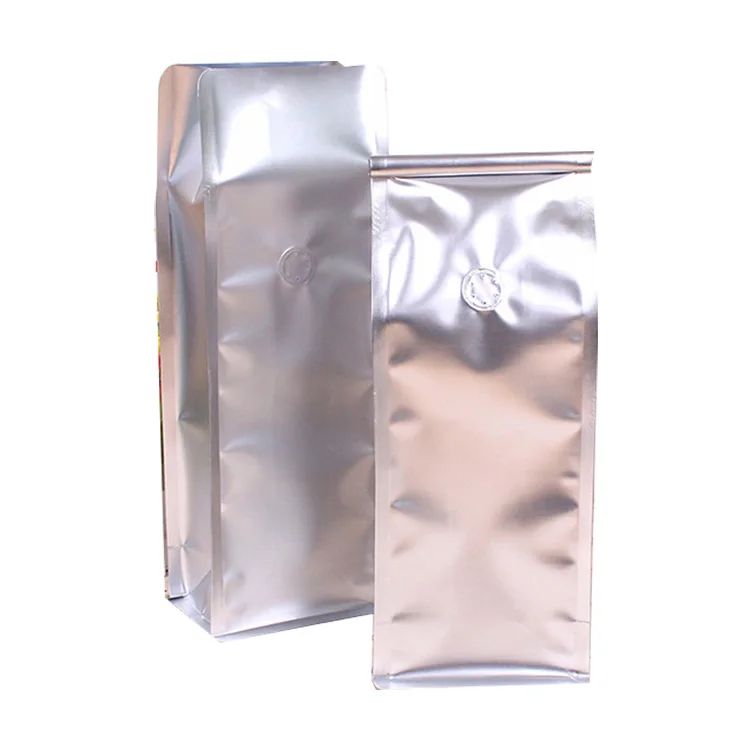
How do the aesthetics of stand up pouch with zipper vary depending on the material used?
The aesthetics of a stand-up pouch with a zipper can vary significantly depending on the material used.
Here’s how different materials can influence the visual appeal and overall aesthetics of the pouch:
- Plastic Films:
- Clear Plastic: Transparent or clear plastic films such as polyethylene (PE) or polypropylene (PP) allow for full visibility of the contents inside the pouch. This provides a sleek and modern look, showcasing the product and its colors or textures.
- Colored Plastic: Plastic films can be manufactured in a variety of colors, including solid hues or tinted shades. Colored plastic adds vibrancy and visual interest to the pouch, helping it stand out on the shelf and align with brand aesthetics.
- Metalized Plastic: Metalized films have a metallic or reflective coating that imparts a premium and sophisticated appearance to the pouch. The metallic sheen adds a touch of elegance and luxury, enhancing the perceived value of the product.
- Paper and Paperboard:
- Kraft Paper: Kraft paper has a natural, rustic appearance with visible fibers and a matte texture. This gives the pouch a rustic or eco-friendly aesthetic, suitable for products with a natural or organic appeal.
- Coated Paper: Coated paperboard materials offer a smooth and printable surface that allows for high-quality graphics and branding. Glossy or matte coatings can enhance the visual impact of printed designs, making the pouch look polished and professional.
- Textured Paper: Some paper-based materials feature embossed or textured finishes, adding tactile interest and dimensionality to the pouch. Textured paper provides a unique and tactile experience for consumers, making the pouch more engaging and memorable.
- Laminates and Composites:
- Metallic Laminates: Laminates combining plastic films with metallic layers offer a striking and eye-catching appearance. stand up pouch with zipper The metallic sheen creates a sense of luxury and sophistication, making the pouch stand out on the shelf and attract attention.
- Printed Laminates: Laminates with custom-printed designs and patterns allow for endless creative possibilities. Printed laminates can feature vibrant colors, intricate graphics, and photorealistic images, enabling brands to create visually stunning and distinctive packaging designs.
- Biodegradable or Sustainable Materials:
- Recycled Plastic: Stand-up pouches made from recycled plastic convey a commitment to sustainability and environmental responsibility. The visual appearance of recycled plastic may vary depending on the source materials but generally has a matte or slightly textured finish.
- Bio-based Films: Bio-based materials derived from renewable sources such as plant-based polymers offer a natural and eco-friendly aesthetic. These materials may have a translucent or matte appearance, emphasizing their renewable and biodegradable properties.
Overall, the choice of material for a stand-up pouch with a zipper can significantly impact its aesthetics, from the transparency and color of plastic films to the texture and finish of paper-based materials. By selecting the right material, brands can create packaging that not only enhances the visual appeal of their products but also communicates their brand identity, values, and product positioning effectively to consumers.
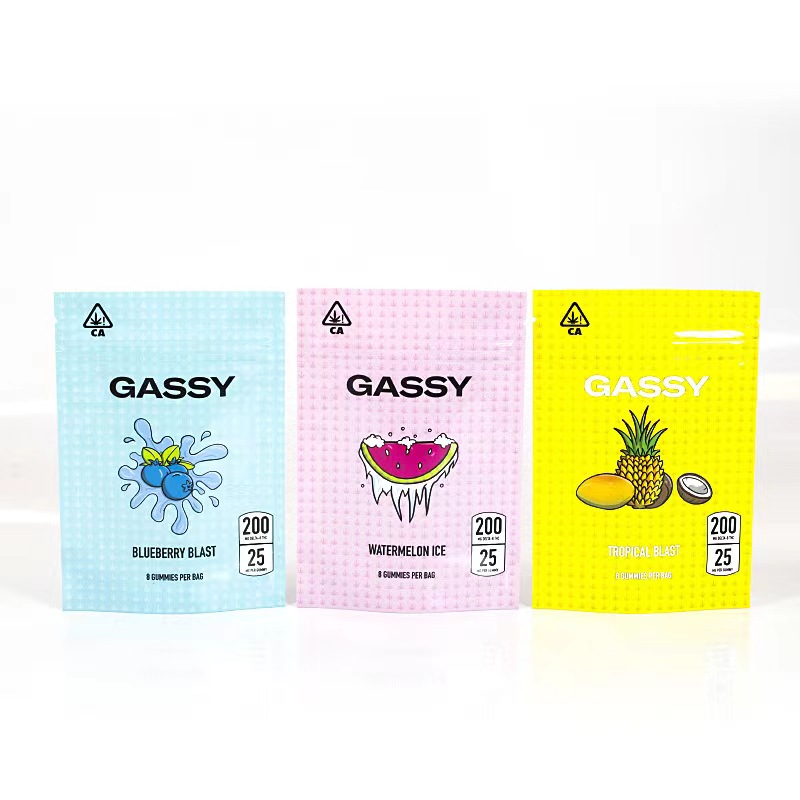
Introduction to the cutting of aluminium sheets
Sheet aluminium can be cut without the need for a guillotine or tin-snips which tend to deform the metal.
With the aid of a straight-edge and a sharp knife “score” both sides of the aluminium sheet. This weakens the aluminium and creates a “fracture line”.
Place the “fracture-line” over the edge of a table and bend the overhang slightly downwards. Flip the sheet over and repeat. After a few “wiggles” the sheet will fracture along the cut-line leaving a clean break as shown in the above photos.
With care and patience full-size sheets of aluminium can be cut using this method. Create a long fracture-line then progressively bend the sheet from one end to to the other.
The metal-folder is made from two right-angle sections of metal. My folder is made from aluminium but “angle-iron” is okay.
The spacing between the two nuts and bolts determines the maximum width sheet that can be bent.
Prepare your work:
Mark where you want your bends.
Remove any unwanted corners.
Fold the aluminium:
Now slip the aluminium sheet between the two angle-s and roll the bender forwards while exerting downward body-weight pressure until the fold is 90 degrees.
Make a slot along one edge of your folder to accommodate the first bend.Position the first fold such that it will enter the slot when the bend is completed.
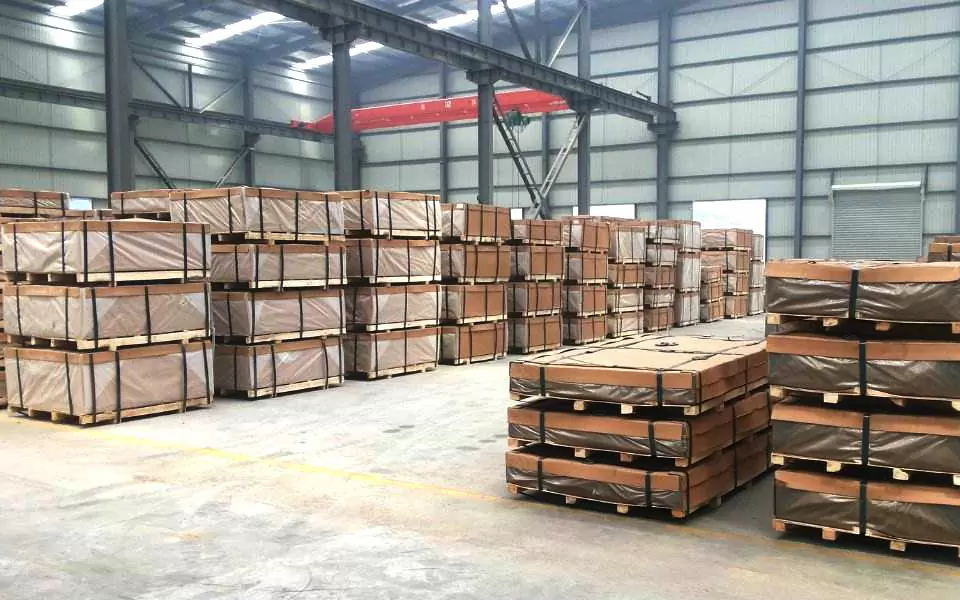
What are the potential applications of China 2 3 4 Stainless Steel Pipe in renewable energy projects?
China 2, 3, 4 stainless steel pipes can find various applications in renewable energy projects due to their durability, corrosion resistance, and versatility.
Here are some potential applications:
- Solar Water Heating Systems: Stainless steel pipes can be used in solar water heating systems to transport hot water from solar collectors to storage tanks. The corrosion resistance of stainless steel ensures longevity and reliability in outdoor environments, where exposure to sunlight and moisture is common.
- Geothermal Heating Systems: Stainless steel pipes are suitable for transporting geothermal fluids in geothermal heating systems. These pipes can withstand the high temperatures and corrosive nature of geothermal fluids, ensuring efficient heat transfer and system performance.
- Biomass Heating Systems: Stainless steel pipes can be used in biomass heating systems to transport hot water or steam from biomass boilers to heat distribution networks. The corrosion resistance of stainless steel ensures the integrity of the piping system, even when exposed to high temperatures and potentially corrosive biomass combustion by-products.
- Hydroelectric Power Plants: Stainless steel pipes can be used in hydroelectric power plants for various applications, including penstock piping, turbine cooling systems, and water conveyance. The corrosion resistance and structural integrity of stainless steel make it suitable for withstanding the hydraulic forces and environmental conditions encountered in hydroelectric power generation.
- Wind Turbine Towers: Stainless steel pipes can be used in the construction of wind turbine towers to provide structural support and stability. China 2 3 4 Stainless Steel Pipe Stainless steel offers high strength-to-weight ratio, corrosion resistance, and durability, making it an ideal material for tower components subjected to outdoor exposure and environmental loads.
- Biofuel Production Facilities: Stainless steel pipes can be used in biofuel production facilities for transporting feedstock, process fluids, and finished products. The corrosion resistance of stainless steel ensures compatibility with various biofuels and process conditions, maintaining the integrity and efficiency of the production process.
- Waste-to-Energy Plants: Stainless steel pipes can be used in waste-to-energy plants for conveying hot gases, steam, or process fluids generated during waste incineration. The corrosion resistance and high temperature tolerance of stainless steel make it suitable for withstanding the harsh operating conditions encountered in waste incineration processes.
- Solar Panel Mounting Structures: Stainless steel pipes can be used in the construction of mounting structures for solar panels in photovoltaic (PV) and concentrated solar power (CSP) projects. Stainless steel offers strength, corrosion resistance, and dimensional stability, ensuring the durability and stability of solar panel installations in outdoor environments.
Overall, China 2, 3, 4 stainless steel pipes can play a crucial role in various renewable energy projects, providing reliable and durable solutions for fluid transport, structural support, heat transfer, and environmental protection. Their versatility and performance make them well-suited for the demanding conditions encountered in renewable energy generation and utilization.
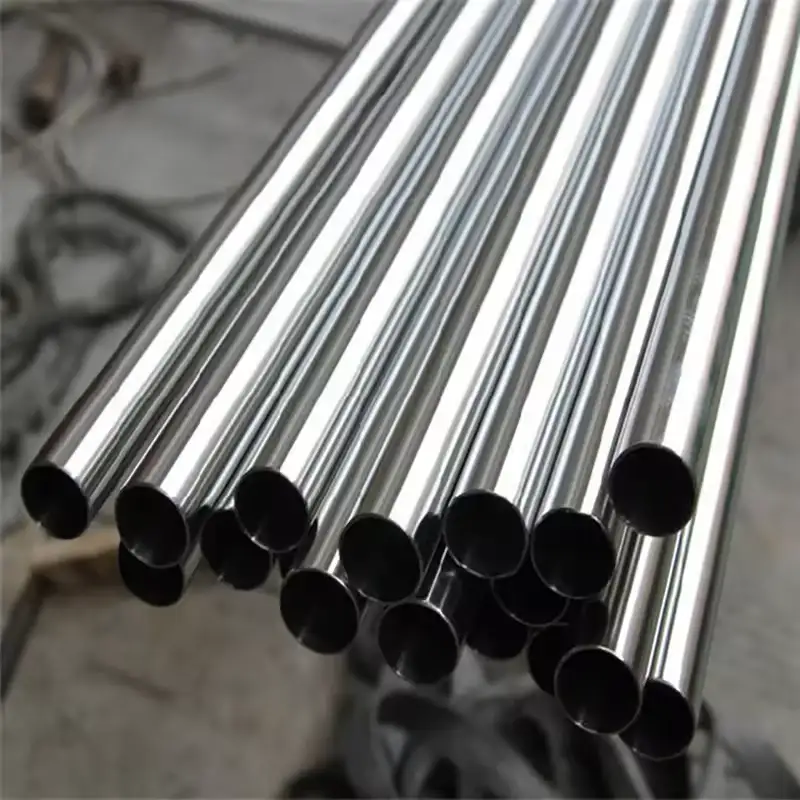
How are 16 Gauge Stainless Steel Sheet tested for quality assurance?
Testing 16 gauge stainless steel sheets for quality assurance involves various methods to ensure that the material meets specified standards and requirements.
Here are some common tests used for quality assurance of stainless steel sheets:
- Chemical Composition Analysis: Stainless steel sheets are tested to verify that they meet the specified chemical composition requirements, including the percentages of chromium, nickel, molybdenum, and other alloying elements. Chemical composition analysis is typically performed using techniques such as optical emission spectroscopy (OES) or X-ray fluorescence (XRF) spectroscopy.
- Mechanical Properties Testing: Stainless steel sheets are tested to assess their mechanical properties, including tensile strength, yield strength, elongation, and hardness. Tensile testing machines are used to measure the strength and ductility of the material by subjecting samples to tension until they fracture. Hardness testing methods, such as Rockwell or Vickers hardness testing, are used to measure the material’s resistance to indentation.
- Surface Finish Inspection: Stainless steel sheets are visually inspected to ensure that they meet the specified surface finish requirements, such as smoothness, uniformity, and absence of defects or imperfections. Surface finish inspection may involve visual examination, magnification, or the use of surface roughness measuring instruments.
- Dimensional Inspection: Stainless steel sheets are measured and inspected to verify that they meet dimensional tolerances and specifications, 16 Gauge Stainless Steel Sheet Price including thickness, width, length, and flatness. Dimensional inspection may involve the use of calipers, micrometers, rulers, or optical measurement systems to ensure accuracy and consistency.
- Corrosion Resistance Testing: Stainless steel sheets are tested to assess their corrosion resistance properties in various environments, including exposure to salt spray, acidic solutions, or high humidity conditions. Corrosion resistance testing methods may include salt spray testing, electrochemical corrosion testing, or exposure testing in simulated environmental conditions.
- Non-Destructive Testing (NDT): Non-destructive testing techniques, such as ultrasonic testing (UT), magnetic particle testing (MT), or dye penetrant testing (PT), may be used to detect surface or subsurface defects in stainless steel sheets without causing damage to the material. NDT methods are used to identify defects such as cracks, porosity, or inclusions that may affect the material’s integrity.
- Certification and Documentation: Quality assurance testing results are documented and provided to customers as part of the material certification process. Certificates of conformity, test reports, and material traceability documentation are provided to verify that the stainless steel sheets meet specified standards and requirements.
By conducting thorough testing and inspection procedures, manufacturers can ensure that 16 gauge stainless steel sheets meet the required quality standards, performance criteria, and customer expectations for various applications.
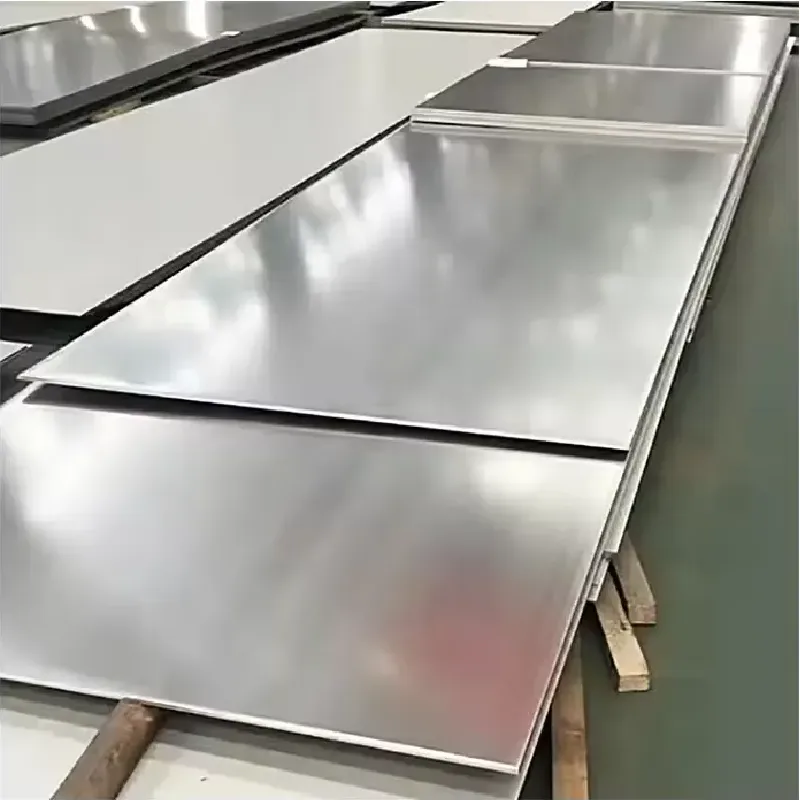
Fire sprinkler History
In 1812, British inventor Sir William Congreve patented a manual sprinkler system using perforated pipes along the ceiling. When someone noticed a fire, a valve outside the building could be opened to send water through the pipes.It was not until a short time later that, as a result of a large furniture factory that repeatedly burned down, Hiram Stevens Maxim was consulted on how to prevent a recurrence and invented the first automatic fire sprinkler. It would douse the areas that were on fire and report the fire to the fire station. Maxim was unable to sell the idea elsewhere, though when the patent expired, the idea was used.[7][8][clarification needed]
Henry S. Parmalee of New Haven, Connecticut, created and installed the first automatic fire sprinkler system in 1874, using solder that melted in a fire to unplug holes in the otherwise sealed water pipes.He was the president of Mathusek Piano Works, and invented his sprinkler system in response to exorbitantly high insurance rates. Parmelee patented his idea and had great success with it in the U.S., calling his invention the “automatic fire extinguisher”. He then traveled to Europe to demonstrate his method to stop a building fire before total destruction.
Parmelee’s invention did not get as much attention as he had planned, as most people could not afford to install a sprinkler system. Once he realized this, he turned his efforts to educating insurance companies about his system. He explained that the sprinkler system would reduce the loss ratio, and thus save money for the insurance companies. He knew that he could never succeed in obtaining contracts from the business owners to install his system unless he could ensure for them a reasonable return in the form of reduced premiums.
In this connection, he was able to enlist the interest of two men, who both had connections in the insurance industry. The first of was Major Hesketh, a cotton spinner in a large business in Bolton who was also chairman of the Bolton Cotton Trades Mutual Insurance Company. The directors of this company and its secretary, Peter Kevan, took an interest in Parmelee’s early experiments. Hesketh got Parmelee his first order for sprinkler installations in the cotton spinning mills of John Stones & Company, at Astley Bridge, Bolton. This was followed soon afterwards by an order from the Alexandra Mills, owned by John Butler of the same town.

Although Parmelee got two sales through its efforts, the Bolton Cotton Trades Mutual Insurance Company was not a very big company outside of its local area. Parmelee needed a wider influence. He found this influence in James North Lane, the manager of the Mutual Fire Insurance Corporation of Manchester. This company was founded in 1870 by the Textile Manufacturers’ Associations of Lancashire and Yorkshire as a protest against high insurance rates. They had a policy of encouraging risk management and more particularly the use of the most up-to-date and scientific apparatus for extinguishing fires. Even though he put tremendous effort and time into educating the masses on his sprinkler system, by 1883 only about 10 factories were protected by the Parmelee sprinkler.
Back in the U.S., Frederick Grinnell, who was manufacturing the Parmelee sprinkler, designed the more effective Grinnell sprinkler. He increased sensitivity by removing the fusible joint from all contact with the water, and, by seating a valve in the center of a flexible diaphragm, he relieved the low-fusing soldered joint of the strain of water pressure. By this means, the valve seat was forced against the valve by the water pressure, producing a self-closing action. The greater the water pressure, the tighter the valve. The flexible diaphragm had a further and more important function. It caused the valve and its seat to move outwards simultaneously until the solder joint was completely severed. Grinnell got a patent for his version of the sprinkler system.He also took his invention to Europe, where it was a much bigger success than the Parmelee version. Eventually, the Parmelee system was withdrawn, opening the path for Grinnell and his invention.
What are the customization options available for Fire Sprinkler?
Fire sprinkler systems can be customized to meet the specific needs and requirements of different buildings, environments, and fire protection standards.
Some common customization options available for fire sprinkler systems include:
- Sprinkler Types: There are various types of sprinklers available, each designed for specific applications. Options include upright, pendant, sidewall, concealed, and recessed sprinklers. Different types may be chosen based on ceiling height, aesthetic preferences, and coverage requirements.
- Temperature Rating: Sprinklers are available with different temperature ratings to activate at specific temperatures. Common temperature ratings include 135°F (57°C), 155°F (68°C), and 175°F (79°C). The selection of temperature ratings depends on the ambient temperature and potential fire hazards in the area.
- Coverage Area: Sprinkler heads can be selected based on their coverage area and flow rate. Different sprinkler patterns, such as standard coverage, extended coverage, or specific hazard coverage, are available to provide optimal protection for different spaces and occupancy types.
- Finish and Color: Sprinkler heads can be customized with various finishes and colors to blend in with the architectural aesthetics of the building. Options may include chrome, brass, white, black, or custom colors to match the ceiling or décor.
- Water Flow and Pressure Requirements: Fire sprinkler systems can be designed to meet specific water flow and pressure requirements based on the size of the protected area, occupancy type, and local fire codes. Fire Sprinkler Flow tests and hydraulic calculations are conducted to determine the optimal design parameters.
- Corrosion Resistance: In corrosive environments or areas with high humidity, corrosion-resistant sprinkler heads made of materials such as stainless steel or corrosion-resistant coatings can be used to extend the lifespan of the system and ensure reliability.
- Freeze Protection: In cold climates, freeze-resistant sprinkler heads with insulated enclosures or dry pipe systems may be installed to prevent freezing and ensure the system’s effectiveness during freezing temperatures.
- Special Hazard Protection: Specialized sprinkler heads are available for protecting areas with unique fire hazards, such as high-temperature environments, flammable liquids, electrical equipment, or hazardous materials. These sprinklers are designed to provide effective fire suppression while minimizing damage to the protected assets.
- Remote Monitoring and Control: Advanced fire sprinkler systems can be equipped with remote monitoring and control capabilities, allowing building owners and authorities to monitor system status, receive alerts, and remotely control sprinkler operation for improved safety and maintenance.
- Integration with Building Systems: Fire sprinkler systems can be integrated with other building systems, such as fire alarm systems, HVAC systems, and building automation systems, to provide coordinated emergency response and enhanced building safety.
Overall, customization options for fire sprinkler systems allow for the design of tailored solutions that meet specific fire protection needs, regulatory requirements, and architectural preferences for different buildings and applications. Collaboration with experienced fire protection engineers and contractors is essential to ensure the effective design, installation, and maintenance of customized fire sprinkler systems.
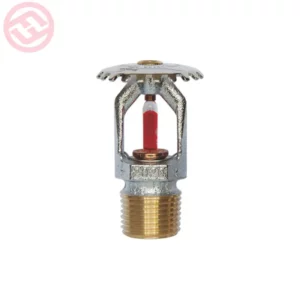
What are the applications of Steel Pipe Fitting?
Steel pipe fittings have a wide range of applications across various industries due to their durability, strength, and versatility.
Some common applications of steel pipe fittings include:
- Plumbing: Steel pipe fittings are extensively used in plumbing systems for residential, commercial, and industrial buildings. They are used to connect pipes, valves, and fixtures, allowing for the conveyance of water, gas, and other fluids.
- HVAC (Heating, Ventilation, and Air Conditioning): Steel pipe fittings are used in HVAC systems for both residential and commercial applications. They help to connect ductwork, air handlers, vents, and other components, allowing for the distribution of heated or cooled air throughout buildings.
- Oil and Gas Industry: Steel pipe fittings are crucial components in the oil and gas industry for transporting and distributing crude oil, natural gas, and refined petroleum products. They are used in pipelines, refineries, petrochemical plants, and drilling operations.
- Chemical Processing: Steel pipe fittings are used in chemical processing plants to convey various chemicals, acids, and corrosive fluids. They are resistant to chemical corrosion and can withstand high temperatures and pressures commonly encountered in chemical processing operations.
- Water Treatment: Steel pipe fittings are used in water treatment facilities for conveying treated water, wastewater, and other fluids. They are used in pipes, pumps, valves, and filtration systems to ensure the efficient and reliable operation of water treatment processes.
- Power Plants: Steel pipe fittings are used in power generation facilities, including coal-fired, natural gas, nuclear, and renewable energy plants. Steel Pipe Fitting They are used in piping systems for conveying water, steam, and other fluids necessary for power generation and cooling processes.
- Mining and Mineral Processing: Steel pipe fittings are used in mining operations for transporting ores, minerals, and slurries. They are used in pipelines, pumps, and processing equipment for conveying materials and fluids in mining and mineral processing operations.
- Construction: Steel pipe fittings are used in construction projects for various applications, including structural support, drainage systems, fire protection, and utility distribution. They are used in building frames, scaffolding, handrails, and plumbing systems.
- Shipbuilding and Marine Applications: Steel pipe fittings are used in shipbuilding and marine applications for constructing hulls, pipelines, and mechanical systems on ships, offshore platforms, and marine vessels. They are resistant to corrosion and can withstand harsh marine environments.
- Food and Beverage Industry: Steel pipe fittings are used in the food and beverage industry for conveying edible liquids, gases, and ingredients. They are used in processing plants, breweries, dairies, and bottling facilities, where cleanliness, hygiene, and corrosion resistance are essential.
Overall, steel pipe fittings are essential components in various industries and applications where strength, durability, and reliability are paramount. Their versatility and suitability for a wide range of operating conditions make them indispensable in modern infrastructure and manufacturing processes.
